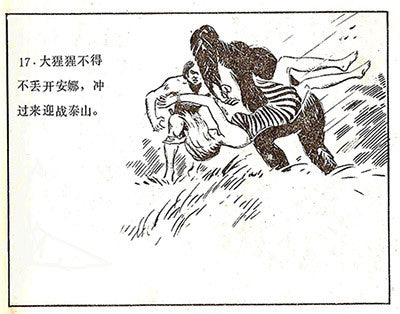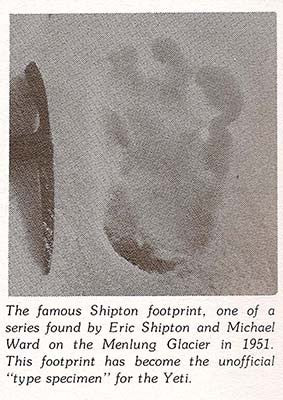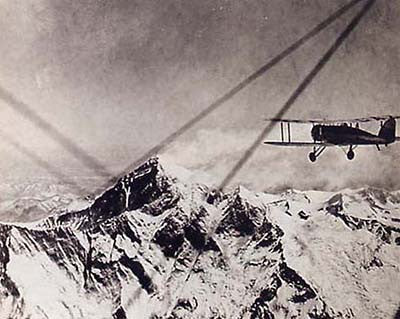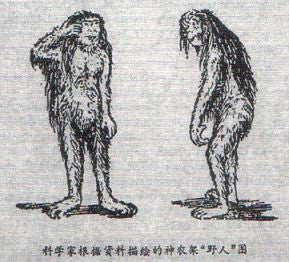





The Asian Wild Man: Yeti Yeren & Almasty Cultural Aspects and Evidence of Reality
Details
By: Jean-Paul Debenat, Paul Leblond, PhD
ISBN: 978-0-88839-719-5
Binding: Trade Paper
Size: 8.5" X 5.5"
Pages: 176
Photos: 38
Illustrations: 29
Publication Date: 2015
Description
PHOTO Highlights: 29 B&W Photos, 9 color photos, 23 Illus and 6 maps.
Description: Debenat takes us on a whirlwind tour of Asia and its extension in the European Caucasus in the footsteps of prominent Wild Man explorers. A presentation of the possible existence of wild men in Asia. The author outlines the expeditions of explorers and researchers, Peter Byrne, Marie-Jeanne Koffmann, Reinhold Messner, Vera Frossard and Zhou Guoxing, and complements historical findings with the search for mythological traces of vanished races. Originally published in French. The possible existence of large humanlike/apelike creature, a Wild Man, in remote regions across the world continues, to fascinate scientists, artists, explorers, & the general public.This wild man exists in myths, religious ritual and folkloric traditions in many diverse cultures, but is there any basis for believing he really does lurk in the mountains throughout Asia? Following in the footsteps of many who have studied and searched for the yeti, almasty and yeren Dr. Debenat documents their experiences and their attempts to answer the question of whether these creatures really ever did exist and, if so, do they still haunt the vast reaches of the Asian wilds? Dr. Debenat presents historical and modern findings, along with the mythology through which native cultures have explained their wild man experiences, and provides readers with a deeper understanding of this most fascinating anthropological mystery.
Author Biography
Book Reviews
Review by Henry May April 7, 2015
The author here takes a look at the species of hominid from the West which share the Asian continent-the Yeti (perhaps the most famous of all worldwide hominids); the Yeren of China and the Almasty of the Mongolian region. He writes about the different legends surrounding each of these species, including their history as pertains to the local peoples. He also highlights two individuals in the book quite frequently-Reinhold Messner, who encountered a Yeti in 1986 and thinks it may be nothing more than a type of bear, and Marie Jeanne-Kaufmann, a French/Russian scientist who has studied the Almasty question for many years in Russia. Messner has made many climbs to mountain peaks without the use of oxygen and believes the yeti is merely bound up in superstition of the local peoples of Tibet and Nepal as to an upright hominid. He came to the conclusion referring to the yeti/bear connection when he saw a pelt hanging in a monastery and the monks called it a Yeti, but he identified it as a bear pelt. Dr. Kaufmann's quest to find the answers referring to the Almasty has led her to some beautiful if rugged locations in the Caucasus Mountains in the former Soviet Union, working closely with Dmitri Bayanov, Igor Bourtsev and the late Boris Porschnev. Every time there was a report mentioned, however, Dr. Kaufmann and her team always seemed to arrive just one step behind the creature they were seeking. The author also writes of Dr. Zhou Guoxing who has searched for the Chinese Wildman, the Yeren for many years, although he seems convinced there is hardly any reality to that creature. Apparently the late Dr. Grover Krantz went to China in 1995 to work with Dr. Guoxing for a few months on the question of the Yeren and Krantz, being 6'2 and bearded and big-nosed was the butt of many jokes of himself being the Yeren! This is an excellent follow-up to his previous book, Sasquatch/Bigfoot and the Mystery of the Wildman, once again translated masterfully by Dr. Paul LeBlond and a worthy one to have on your cryptozoological bookshelf. Perfect 10!
Review of The Asian Wildman by Joe Beelart
Friends, colleagues, and even to those who don't like me, I cannot say how much this book impressed me. It warmed my heart. Buy it, read it, learn. After the first two chapters I actually read it slow so it would last longer. This book tells a long story, a story much longer than BF in the Americas because BF in the Americas is a recent invention of the white invaders, specifically in the Pacific Northwest. Our BF history is not from Native Peoples who are seldom mentioned in New World BF literature; especially in regards to the Americas' wildman as it related / relates to Native Peoples traditions, and life. It is very hard for me to relate how The Asian Wildman places the ancient traditions of varieties of wildmen living alongside man through civilizations. Of course there is an emphasis on modern history, simply because there is more of it. This book also answers basic questions about even our BF: A fundamental: BF likes horses because their scat contains salts and minerals. Jean-Paul was friends with Jean-Charles Pichon and Dr. Bernard Heuvelmans. To research this book he traveled to the Americas in 2008 and met many noted Bigfooters. In this regard, he makes a very important contribution to understanding the work of Peter Byrne in Nepal. I met him during his trip and talked with him for almost two hours. Jean-Paul is a very pleasant, happy man and that is reflected in his book {I am not mentioned}. The bibliography for The Asian Wildman takes five pages. It is a pleasure to know that Jean-Paul's book work is largely based on material not known to me, and I assume most people on this list. Bravo Jean-Paul!